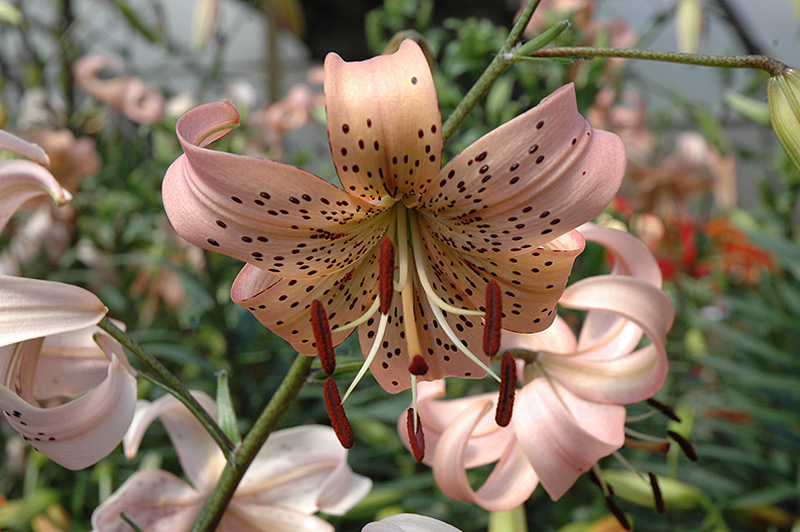Plant Height: 24 inches Flower Height: 3 feet Spacing: 18 inches
Sunlight:
Hardiness Zone: 2 Other Names: Lilium tigrinum Group/Class: Tiger Lily Description: An impressive cultivar of tiger lily producing lovely pink nodding blooms with lots of black freckles; the soft pastel shade lends to a calming garden visual; an excellent choice for border plantings and really creates an impact when massed Ornamental Features Pink Tiger Lily features bold nodding pink trumpet-shaped flowers with black spots at the ends of the stems in mid summer. The flowers are excellent for cutting. Its narrow leaves remain green in color throughout the season. Landscape Attributes Pink Tiger Lily is an herbaceous perennial with a rigidly upright and towering form. Its medium texture blends into the garden, but can always be balanced by a couple of finer or coarser plants for an effective composition. This plant will require occasional maintenance and upkeep, and should be cut back in late fall in preparation for winter. Gardeners should be aware of the following characteristic(s) that may warrant special consideration; Pink Tiger Lily is recommended for the following landscape applications; Planting & Growing Pink Tiger Lily will grow to be about 24 inches tall at maturity extending to 3 feet tall with the flowers, with a spread of 24 inches. When grown in masses or used as a bedding plant, individual plants should be spaced approximately 18 inches apart. It tends to be leggy, with a typical clearance of 1 foot from the ground, and should be underplanted with lower-growing perennials. It grows at a fast rate, and under ideal conditions can be expected to live for approximately 10 years. As an herbaceous perennial, this plant will usually die back to the crown each winter, and will regrow from the base each spring. Be careful not to disturb the crown in late winter when it may not be readily seen! This plant does best in full sun to partial shade. It does best in average to evenly moist conditions, but will not tolerate standing water. It is not particular as to soil type or pH. It is somewhat tolerant of urban pollution. This is a selected variety of a species not originally from North America. It can be propagated by multiplication of the underground bulbs; however, as a cultivated variety, be aware that it may be subject to certain restrictions or prohibitions on propagation.
![]()
![]()
![]()
![]()
![]()
![]()
![]()
![]()
![]()
Characteristics
Applications
Features & Attributes

